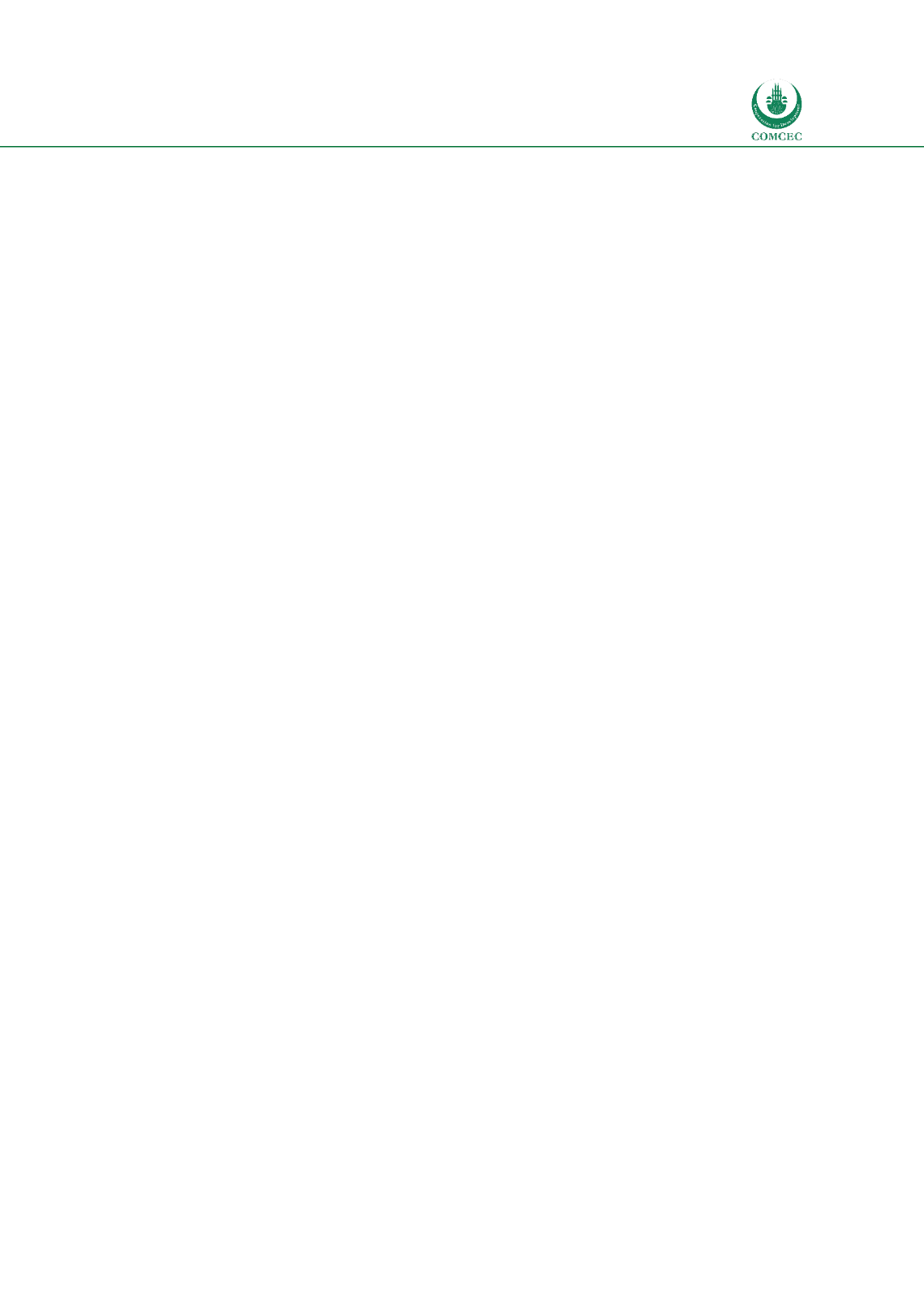

National and Global Islamic Financial Architecture:
Prolems and Possible Solutions for the OIC Member Countries
133
4.10. Sudan
The Islamic banking and finance industry emerged in Sudan during the Economic Openness
Period (EOP) during the years 1976-1983 that witnessed major economic reforms (Abushora
et. al 2006). The Central Bank of Sudan (CBOS) differentiates between two periods of
Islamization of banking and the financial system. The first was the “Stage of Declaration and
Starting Islamic Banking" which started after the announcement of the Shari’ah law in 1983
(that prohibited riba) and the enactment of the Civil Transactions Act of 1984. This ended in
1988. CBOS also issued a circular (Number 11
ب
س/ ر ع م /
) in 1984 stipulating the prohibition
of dealing in interest rates and instructing all banks to convert from conventional to Islamic
banking. Thereafter, the whole banking system was completely transformed to Islamic and
many private Islamic financial institutions continued entering the market.
The second stage, the “Stage of Deepening Islamic Financial System", occurred during the years
1989-2003. This period witnessed
the Islamization of insurance companies, merging of some
government banks, liquidation of some private banks, changing the names of some banks, and
emergence of investment banks
(Abushora et. al 2006).
In 1992, the Minister of Finance issued
Decree Number 219 which enforced the conversion of all conventional insurance companies to
Islamic insurance companies (Sulieman, 2013). The period also witnessed the emergence of
the Khartoum Stock Exchange (KSE) in 1994. KSE Act of 1994 was issued and the primary
stock market started operations in the same year and the secondary stock market in 1995 with
34 listed companies, (Al-Sayed, 2011).
Several Islamic banks existed in Sudan before the Islamization of the financial sector. Faisal
Islamic Bank (FIB) was established in the country in 1977 followed by Al-Tadamon Islamic
Bank in 1980, Sudanese Islamic Bank and the Islamic Cooperative Development Bank in 1982,
and Al-Baraka Bank Islamic Bank of Western Sudan in 1983. Similarly, the Islamic Insurance
Company (IIC) commenced operations in January 1979 as the first Islamic insurance company
in the world (Bekkin, 2009). It was followed by Al Baraka Insurance Company in 1985,
National Cooperative Islamic Insurance Company (renamed Taawuniya) in 1989 and El Salama
Insurance Company in 1992. The Shiekan Insurance and Reinsurance Company was
established in 1983 as a conventional insurance company which converted to an Islamic
insurance company in 1990.
The Islamic financial industry has grown rapidly in Sudan. Other than Islamic banks, takaful
companies, Khartoum Stock Exchange, many nonbanking financial institutions such as
exchange bureaus, ijarah companies and microfinance institutions operate under the direct
supervision of CBOS. The financial sector in Sudan is dominated by banks which represent
97% of the financial sector. Insurance companies stand for approximately 3%. The total
Islamic banking assets of 28 banks in Sudan account to USD 10.651 billion in 2014, making the
country the 13
th
largest in the world. Thirteen
takaful
companies and two takaful reinsurance
companies operate in the country (CBOS, 2014). The total size of the direct premium has
increased significantly from USD129 million in 2010 to USD 250 million in 2013 while the
indirect premium (reinsurance premium) increased from USD 49 million to USD 100 million in
the same period (ISA 2011; ISA 2013). The Khartoum Stock Exchange (KSE) has also witnessed
successive growth during the last years with 60 companies, 27 investment sukuk, and 45
investment Certificates listed as of 2013 (KSE, 2013). KSE changed from manual to computer-
based trading in January 2012. However, trading in KSE is dominated by Government
















